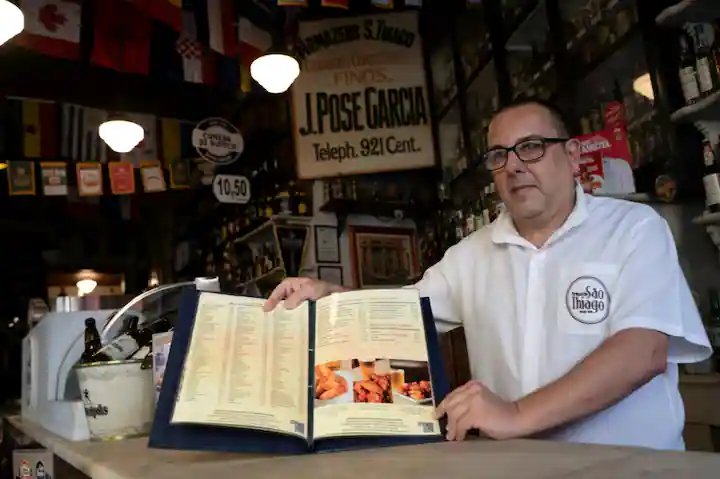QR Code Menus Stir Controversy in Rio and Beyond
Browsing through the menu at a traditional restaurant called Armazem Sao Thiago in Rio de Janeiro, Paula Cardoso, a 28-year-old customer, expressed a different preference that goes against the restaurant's traditions: "I actually prefer QR code menus." Armazem Sao Thiago, founded in 1919 and owned by the same family for three generations, prides itself on its physical menus, which are handed to customers by waiters in pristine white shirts.

Browsing through the menu at a traditional restaurant called Armazem Sao Thiago in Rio de Janeiro, Paula Cardoso, a 28-year-old customer, expressed a different preference that goes against the restaurant's traditions: "I actually prefer QR code menus." Armazem Sao Thiago, founded in 1919 and owned by the same family for three generations, prides itself on its physical menus, which are handed to customers by waiters in pristine white shirts. Carlos Fionda, a 59-year-old manager at the restaurant, believes that the menu is an important part of the overall dining experience, as it allows for interaction and personalized assistance, rather than a cold and impersonal digital option.
However, there is a growing debate worldwide regarding the use of QR code menus. In Rio state, a recent law was enacted requiring restaurants and bars to provide physical menus for customers who don't have smartphones, face technical difficulties, or simply prefer not to use their devices while enjoying a meal with loved ones. Similar measures are being considered in other states as well. The discussion surrounding QR codes extends beyond Brazil, with Miami, Florida, also considering a similar bill. Last year, Colombia implemented a comparable measure, while lawmakers in Argentina's Mendoza province are proposing a bill that would mandate the availability of digital menu options.
The prevalence of digital menus has become a contentious issue in a world where dining has increasingly gone digital. As concerns over surface-borne contagion from the pandemic subside, many diners express frustration with the drawbacks of digital menus, such as navigating on small screens, connectivity issues, dead phone batteries, and the lack of human interaction. Some have strongly criticized QR code menus, with a Washington Post columnist describing them as the "death of civilization," and an article in Vice magazine expressing a desire to go back to traditional menus. Brazilian influencer Felipe Neto even posted a viral tweet in May asking if QR code menus were a "gigantic pile of shit."
However, defenders of digital menus argue that they offer practical advantages. Cardoso, a young marketing manager, finds them more convenient, allowing access on smartphones and providing more visual representations of the food. She believes traditional menus become outdated over time. Many restaurant owners appreciate the technology and hope that customers will embrace it as well, as it enables innovation, seasonal updates, and fresh offerings. For example, Andre Delfino, the manager of Casa Nossa, an elegant restaurant in Santa Teresa, highlights how digital menus allow for quick updates without environmental impact, citing his recent addition of Japanese food to the menu. Francisco Dantas, co-owner of Cafe do Alto, values the fluidity of QR code menus, particularly for his ever-changing craft beer selection.
The Brazilian Association of Bars and Restaurants advocates for leaving the decision of menu format to individual owners, considering it a matter for the market. They conducted a recent survey which revealed that 38 percent of Brazilian restaurants have already adopted digital menus, and an additional 25 percent plan to do so. This growing ubiquity concerns Rodrigo Amorim, a Rio state lawmaker who introduced the new law. He believes that while the world may be moving towards all-digital menus, the transition should be respectful and inclusive. Amorim also emphasizes the romanticism of holding a physical menu when entering a restaurant and making dining choices.
What's Your Reaction?
















